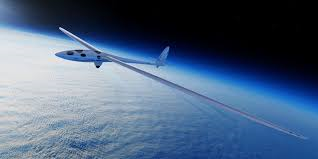
Breaking News
 The 3 Reasons Behind US Plot to Depose Venezuela's Maduro – Video #254
The 3 Reasons Behind US Plot to Depose Venezuela's Maduro – Video #254
 Evangelicals and the Veneration of Israel
Evangelicals and the Veneration of Israel
 Zohran Mamdani's Socialist Recipe for Economic Destruction
Zohran Mamdani's Socialist Recipe for Economic Destruction
 BREAKING: Fed-Up Citizens Sue New York AG Letitia James for Voter Intimidation...
BREAKING: Fed-Up Citizens Sue New York AG Letitia James for Voter Intimidation...
Top Tech News
 HUGE 32kWh LiFePO4 DIY Battery w/ 628Ah Cells! 90 Minute Build
HUGE 32kWh LiFePO4 DIY Battery w/ 628Ah Cells! 90 Minute Build
 What Has Bitcoin Become 17 Years After Satoshi Nakamoto Published The Whitepaper?
What Has Bitcoin Become 17 Years After Satoshi Nakamoto Published The Whitepaper?
 Japan just injected artificial blood into a human. No blood type needed. No refrigeration.
Japan just injected artificial blood into a human. No blood type needed. No refrigeration.
 The 6 Best LLM Tools To Run Models Locally
The 6 Best LLM Tools To Run Models Locally
 Testing My First Sodium-Ion Solar Battery
Testing My First Sodium-Ion Solar Battery
 A man once paralyzed from the waist down now stands on his own, not with machines or wires,...
A man once paralyzed from the waist down now stands on his own, not with machines or wires,...
 Review: Thumb-sized thermal camera turns your phone into a smart tool
Review: Thumb-sized thermal camera turns your phone into a smart tool
 Army To Bring Nuclear Microreactors To Its Bases By 2028
Army To Bring Nuclear Microreactors To Its Bases By 2028
 Nissan Says It's On Track For Solid-State Batteries That Double EV Range By 2028
Nissan Says It's On Track For Solid-State Batteries That Double EV Range By 2028
The Perlan 2 Glider Will Fly 90,000 Feet Higher Than Most Aircraft

This summer, two pilots sandwiched in a 36-inch-wide cabin could take the Perlan 2 glider to 90,000 feet, higher than most aircraft have flown. To reach such heights, the glider will ride stratospheric waves—powerful and little-understood currents that flow over mountain ranges.
It will be flying in uncharted and unstable aeronautic territory, and between the rigors of thin air and blistering ultraviolet radiation, the slightest miscalculation could be disastrous. If successful, the Perlan 2 could expand the parameters of high-altitude flight, enhance climate science, and provide new insights on planetary exploration. All without burning a drop of jet fuel.
"This area has the most intense turbulence outside what you'd get in a hurricane or a cyclone. It's like you're in a washing machine."
—Morgan Sandercock, project manager

 Carbon based computers that run on iron
Carbon based computers that run on iron

